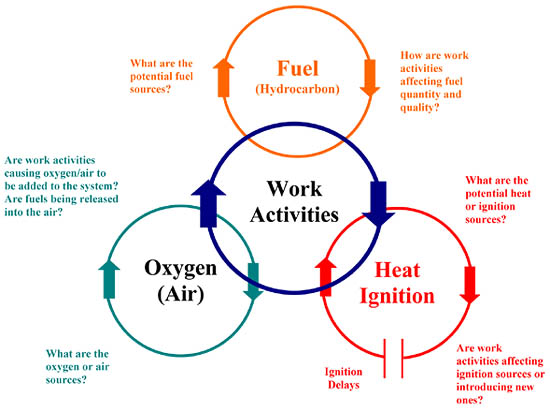Preventive Strategies & Controls |
 |
Those responsible for planning, supervising and completing oil and gas activities need to work together to identify the potential fire and explosion hazards of each specific operation and then take the appropriate steps to manage the potential risks. The questions here are designed to help those involved conduct a fire and explosion risk assessment.
A. What are you doing? Do you have the right ingredients for a fire or explosion?
- Are there hydrocarbons – fuels?
How do you know whether they are there or not?
What do you know about that fuel?
- Is there an oxygen source?
How can this happen in a closed system?
How can hydrocarbons be released into the work site?
- Is there an ignition source?
Are there any obvious ignition sources?
What about those that are not so obvious?
B. What can go wrong?
- How can the ingredients combine?
What type of work is planned?
What changes could take place that change the risk?
Are there any warning signs? (near misses)
C. How can you stop it from going wrong? (Preventive Controls)
- Are there sufficient ‘barriers’ in place?
What are they? (operations/equipment specific)
How could these precautions fail?
D. What will you do if it goes wrong? (Protective Controls)
- How do you respond if you know the ingredients are together?
This Fire and Explosion System diagram shows the complex interplay between work activities and the elements of the fire triangle. It poses the questions that must be asked continually during an operation in order to assess how changing dynamics will affect the potential risk of a fire or explosion.

 printable version of diagram printable version of diagram
Related Information:
Preventive Strategies & Controls
FEHM Strategies | Operational Assessment Guidelines | Operational Controls
|



